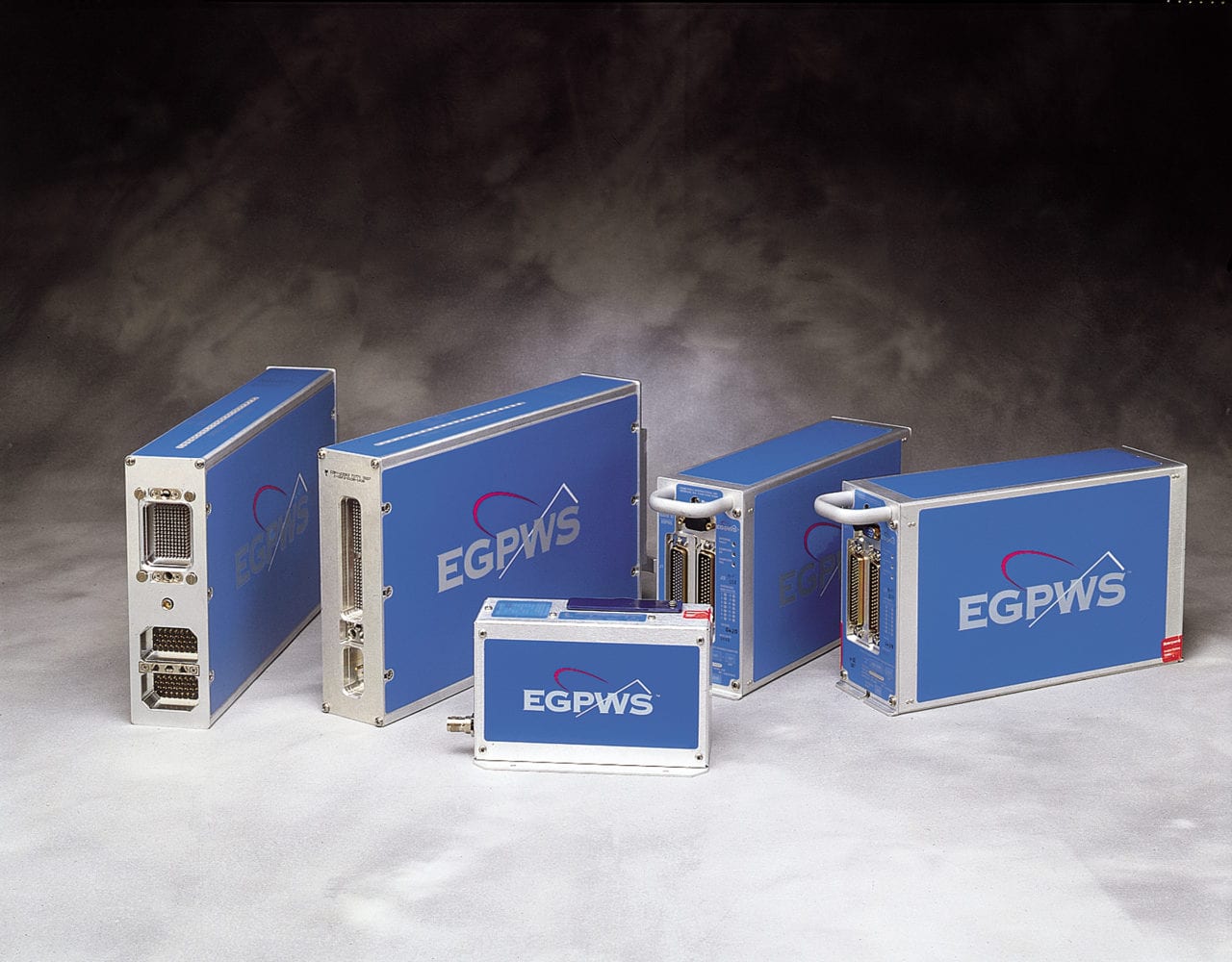
Honeywell’s EGPWS family of products, including the Mk XXII for helicopters. (Honeywell)
Four top helicopter builders — Airbus, Bell, Leonardo Helicopters, and Lockheed Martin’s Sikorsky — have agreed on improvements for their helicopter terrain avoidance and warning systems (HTAWS), according to HeliOffshore, a safety organization for the offshore helicopter industry.
HeliOffshore chief executive Gretchen Hawkins, said in a statement that “effective collision avoidance is fundamental to helicopter safety” and that the collaborative effort “is working to give pilots earlier alerts through the widespread adoption of upgraded HTAWS in the offshore helicopter sector.”
HeliOffshore organized a recent meeting on terrain-avoidance upgrades “that promise significant safety benefits” with senior executives from the companies, as well as avionics maker Honeywell, the European Aviation Safety Agency, and the U.K. Civil Aviation Authority.
The agreement first calls for adjusting alert envelopes on existing helicopters equipped with Honeywell’s Enhanced Ground Protection Warning System (EGPWS) Mk XXII HTAWS — adjustments that are to increase “the time available for pilots to avoid a possible unsafe aircraft flight condition,” HeliOffshore said.
Honeywell’s Mk XXII is designed for IFR-equipped helicopters with a radio altimeter. In addition to its HTAWS required modes, the system includes several GPWS modes and unique call-outs for excessive bank angle, tail strike protection and auto-rotation.
Late last year, Honeywell conducted simulator trials with two offshore operators, CHC Helicopter and Bristow Group, that showed how the use of the UK Civil Aviation Authority’s CAP 1519 flight envelopes can reduce the incidence of controlled flight into terrain/surface accidents, HeliOffshore said.
“Operational experience from offshore Commercial Air Transport in support of oil and gas exploitation has shown that current HTAWS are not optimized for those operations,” according to the latest edition of CAP 1519, published in September. “Some current HTAWS are unable to display fixed obstacles such as large oil platforms with sufficient accuracy. Even if the accuracy is sufficient, keeping the obstacle database sufficiently up to date is impractical due to the large number of mobile obstacles.”
“Addressing the issues associated with the Enhanced Mode would be difficult and probably impractical. However, there is scope for improving the Classic Modes which utilize aircraft flight parameters, such as height and rate of descent,” CAP 1519 said. “This has been achieved using flight data extracted from helicopter operators’ Flight Data Monitoring programs to develop alert envelopes which would warn crews of hazardous flight profiles while constraining the alert rate to an acceptable level.”
In the near term, the four helicopter companies agreed to focus on implementing Modes 1 through 6 of the enhanced HTAWS software, which will provide 60 percent of the total safety benefit foreseen, and the companies will implement the 7th and final mode after additional flight tests, according to HeliOffshore. For example, Leonardo will undertake the Mode 1 through 6 upgrades next year for its AW139 and AW189 helicopters, HeliOffshore said, while Bell will first introduce those modes for its new 525 Relentless helicopters, Airbus for its H175s and H160s in 2021, and Sikorsky for its S-92 in 2021 with the introduction of revision 11 of its Avionics Management System (AMS-11).
HeliOffshore is also working to include HTAWS in helicopter Flight Crew Operating Manuals.